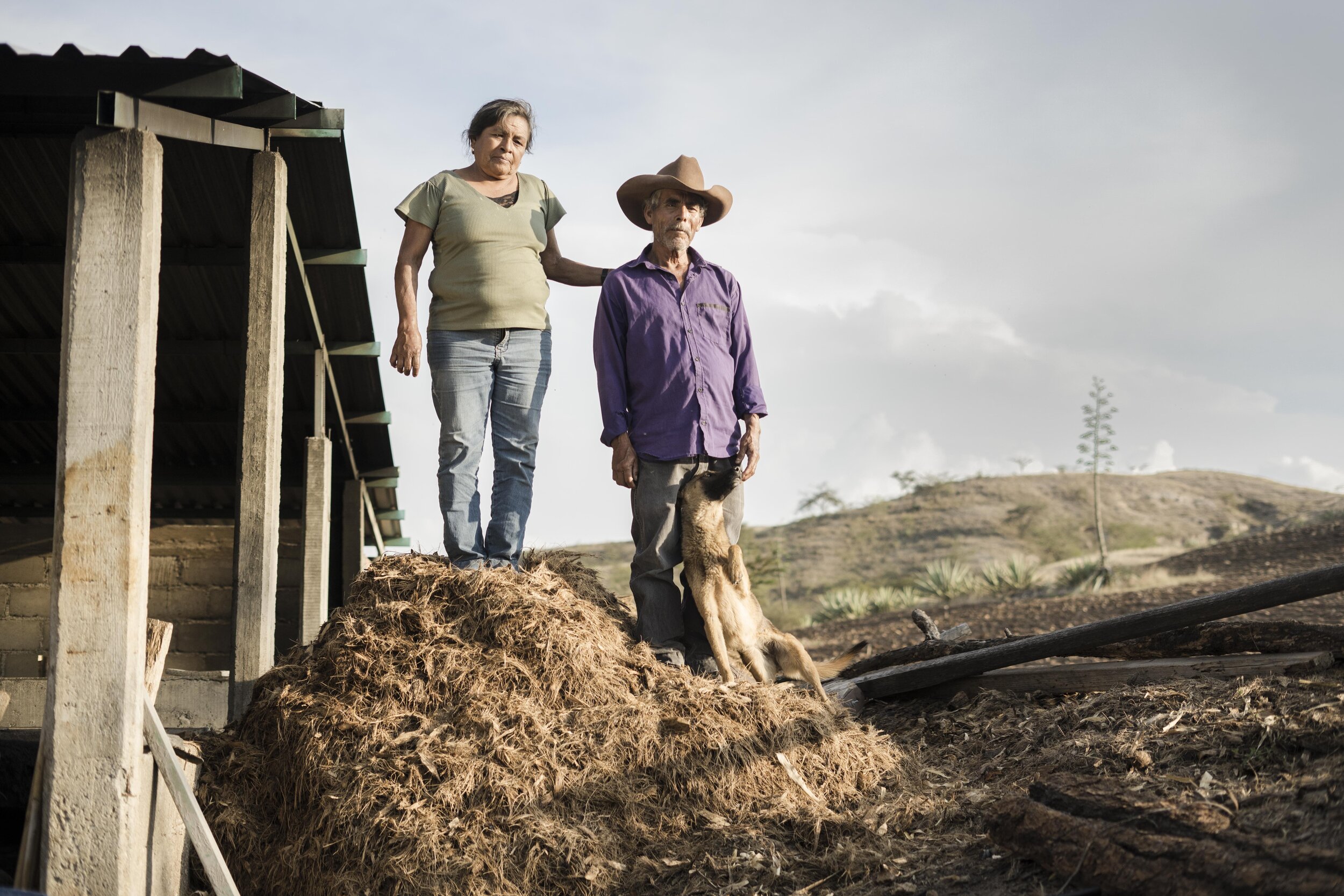Ensamble de 6
47.6%, April 2021
Celedonio Aquino Gutíerrez, Logoche, Miahuatlán Oax.
Maguey(es):
Tepextate, Cucharillo, Madrecuixe, Espadín, Bicuixe, and Tobalá
• Provenance of the maguey: Homegrown and wild agaves harvested on family land
• Producer: Celedonio Aquino Gutíerrez
• Region: Logoche, San Luis Amatlán, Miahuatlán, Oaxaca
• Soil type: § brown rocky earth, tierra café
• Rest time after harvest: eight days
• Oven: Conical earthen oven; eight days with mesquite wood and oak
• Rest time after oven: 8 days
• Maceration: Machete and shredder
• Fermentation: 1200L Montezuma cypress wood vats
• Dry fermentation time: 48 hours
• Wet fermentation time: 10 days
• Distillation: 2x in copper pots
• Final composition: puntas, cuerpo, shishe/colas
• Batch size: 120L
• Date of distillation: April, 2021
• ABV: 47.6%
Tío Celedonio generally reserves his work with agave for the dry months of the year, making only a few hundred liters annually from a mix of homegrown and wild-harvested agave. His family recalls their traditions of distillation dating back to 1808, with an Aquino ancestor arriving to the Lachigüizo from Zoquitlán, with copper pots in stow. A couple generations later, they relocated just down the river to Logoche, founding one of the first clandestine palenques in the village, around the turn of the 20th century. While tools, technology, and legal status have changed, Celedonio and his wife, Telesfora, continue to uphold the agrarian and gastronomic traditions of the region and distill with great pride.
For those curious, there were nine piñas of Tepextate, eight Cucharillo, 15 Madrecuixe, 10 Espadín, 20 Bicuixe, and 7 piñas of Tobalá. In crafting this ensamble, Celedonio harvest enough agave and dasylirion plants from one plot of tierra café to fill two fermentation vats with around 700kg each, topping them off with 300L of well water. The end result is a definitively Miahuateco ensamble with a rich texture and heavy minerality; the natural sweetness of the mature and perfectly cooked agave and Cucharillo play well with the salinity of the soil and water of the region.





















